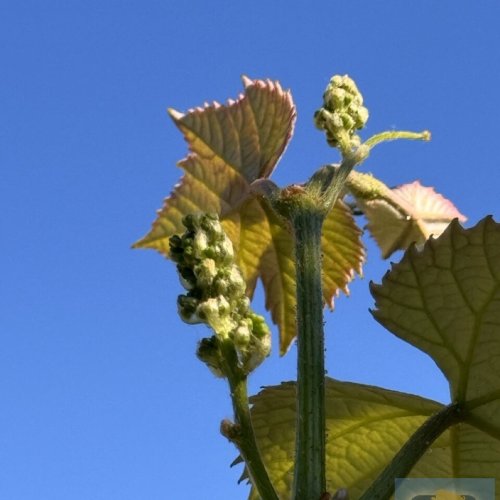I have a bariatric lap band (since 2005) and have done all six of my Caminos working around this issue. Your procedure and its consequences are somewhat different. But our dietary needs remain the same. The advice given above about how to find food and drink is very valid. Falcon269 is among our most authoritative veterans.
Basically, those of us with bariatric surgery issues must find a viable means to supplement our diets with protein to maintain energy, metabolism and to forestall dehydration. It is simply not possible to source enough protein of the correct type along the way given the timing and distribution requirements your surgery imposes. The easiest solution, in my experience, is a powder that combines with water that you can carry and ingest along the way, on your schedule.
My contribution to this advice is to ask your doctor about a locally available source of medical grade protein supplement powder that can be mixed with water. Here in the US, I use a product called UNJURY (
www.UNJURY.com). Unfortunately, they have no overseas distribution.
UNJURY powder comes both in plastic containers, about 1.5 liters in capacity, for 18 drinks. It also comes in single-serving envelopes that are highly portable. Each serving contains 20 grams of medical grade protein. I use the containers at home or when I am at Santiago volunteering for a month. When on Camino, I use the single-serving envelopes.
UNJURY comes unflavored, and in Chocolate, Strawberry, and Vanilla flavors. I use 2 - 3 per day to supplement whatever protein I can source locally. The unflavored variant is what they use to 'feed' you through a nasogastric tube if you must be fed via tube, through the nose and down the throat. The flavored versions are great. Choco and Strawberry blend very well in water. The vanilla version turns plain coffee, even instant, into a luxurious mocha shake or smoothie.
Usually, when walking, I start my day with hot tap water in a half-liter bottle. I add the UNJURY Vanilla powder though the funnel, followed by a single-serving instant coffee packet (e.g. Nescafe). Once I cap and shake the bottle I have my first morning's shot of caffeine and enough caffeine and protein to get me to the first REAL cup of coffee at a cafe / bar. This is a real psychological boost, especially if the place you slept at does not offer coffee in the morning.
If you do find protein powder, don't forget a small, foldable funnel. It makes getting the protein powder into the water bottleneck MUCH easier.
Recently, I have seen protein supplements in Spanish pharmacies at Santiago. But, I have not yet checked them out for applicability to our sort of need. Ask your doctors. Do your research. If you can find something that is available generally, in most supermarkets or pharmacies in Spain, this would be idea.
I must carry two weeks worth of powder packets with me. This works out to one kilo EXTRA at the start. So, hitting the mythical 10% of body weight target for my rucksack is a simply a non-starter. I just deal with it. It is what it is...
Usually, I send another two-weeks supply of protein powder and all the various nutritional supplements I must take daily, ahead to a hotel / hostal that I have a reservation to stay at, two weeks hence. This degree of coordination sounds more difficult than it is.
All you do is ask, via e-mail, after making a reservation, if you can send a box the size of a shoebox to await your arrival. This is a Correos 'mediana' sized box. Tell them the box contains special food supplements for you. As soon as you arrive at your first Spanish town, go to the Correos and post the box. I recommend the
www.correos.es app for this.
Then, show up. If you cancel the reservation, you stand the chance of losing your stuff.
You can also use 'Lista Correos' (Post Restante in Spain) to the local post office. The downside is that the Correos is not open all the time. You should also send supplies to be at Santiago when you finish your Camino. I have sent replenishment supplies both to Ivar and to hotels. It works fine.
Spanish tortilla is an excellent source of protein that you can ingest easily, even with a gastric sleeve or bypass condition. It is essentially a scrambled egg and diced potato pie. There is no crust to speak of and it is available at most all cafes / bars across spain, especially in the morning.
Falcon mentions Aquarius above. This is a Coca Cola product that is the Euro equivalent of Gatorade or Powerade sports drinks. It has a lot of sugar / sweetener in it, but also contains some salts that you need for rehydration. On balance, it is a viable field-expedient substitute.
I maintain hydration through at least one-half liter of water hourly, whether or not I think I am thirsty. I also carry with me a plastic tube of 10 hydration tablets. I use the NUUN brand and I obtain them in a runners supply store. You should be able to find something similar near you.
These tablets dissolve quickly in a half-liter bottle of water, forming a salty tasting but flavored hydration drink. To fit the tablet into the bottle, you must first crack it in half... I only use the NUUN tablets if I cannot locate something locally by about noon. Then I make a drink from one of my four half-liter water bottles and consume it during my last hour or two of planned walking for the day.
Bottom line, it is doable, easily. You just have to think ahead. Others have done it. If you have questions, just ask.
Hope this all helps.









